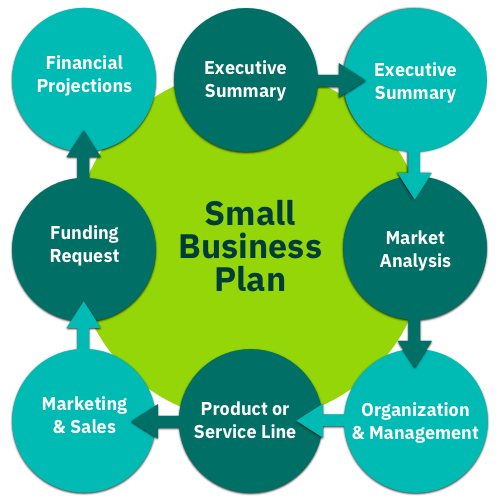Presentation anxiety is a common challenge that affects even the most seasoned professionals. The pressure can be overwhelming when the stakes are high, such as pitching for investment or presenting a business idea. However, anyone can overcome this anxiety with the right strategies and mindset and deliver a confident, compelling presentation. This guide will provide you with actionable techniques to manage anxiety, enhance your presentation skills, and ultimately secure the success you’re aiming for.
Understanding the Root Causes of Presentation Anxiety

Fear of Judgement
One of the primary causes of presentation anxiety is the fear of being judged by others. This fear often stems from a lack of confidence and the worry that others may find fault in what you say or how you present it. The higher the stakes, the more intense this fear can become, especially when presenting to unfamiliar individuals.
Fear of Failure
The fear of not meeting expectations, making mistakes, or forgetting crucial points can also trigger anxiety. This fear is particularly potent when the presentation’s outcome is critical, such as securing an investment or winning a contract. The pressure to perform flawlessly can paralyse even the most prepared individuals.
Performance Pressure
Performance pressure is another significant contributor to anxiety. The need to impress, especially in situations where a lot is on the line, can lead to self-doubt and stress. This pressure is compounded when the audience is perceived as critical, or the presenter’s credibility is on the line.
Effective Preparation Strategies
Rigorous Practice
Practice is the cornerstone of a successful presentation. Rehearse your pitch multiple times until you are confident in your delivery. Practice in front of friends or colleagues who can provide constructive feedback. This will help you become more comfortable with the material and reduce anxiety by increasing familiarity with the content.
Deep Audience Research
Understanding your audience is crucial. Research who will be in the room, what their interests are, and what they are looking for in your presentation. Tailoring your message to resonate with your audience’s needs can significantly reduce anxiety and increase your chances of success.
Visualising Success
Visualisation is a powerful tool for managing anxiety. Spend time imagining yourself delivering a successful presentation. Picture the audience responding positively, and visualise each step of your presentation going smoothly. This mental rehearsal can build confidence and reduce nerves.
Backup Plans
Always have backup materials ready. This could include extra slides, notes, or even a script. Knowing that you have a safety net can alleviate some pressure and allow you to focus on delivering your message effectively.
Techniques for Managing Anxiety on Presentation Day

Pre-Presentation Calming Techniques
- Deep Breathing: Practice diaphragmatic breathing to calm your nerves before the presentation. Slow, deep breaths can help regulate your heart rate and reduce feelings of panic.
- Positive Self-Talk: Replace negative thoughts with positive affirmations. Remind yourself of your capabilities and preparation.
- Grounding Exercises: Engage in grounding techniques to bring your focus back to the present moment. Concentrate on your physical surroundings or the sensations in your body to reduce anxiety.
Strategies During the Presentation
- Focus on the Message: Shift your focus from your anxiety to the content of your presentation. Remember that your goal is to convey a message rather than to deliver a perfect performance.
- Use the Audience to Your Advantage: Remember that the audience is there to listen to your ideas, not to judge you. Engage them by asking questions or seeking their opinions, which can help reduce the pressure on you.
- Body Language: Maintain an open posture, make eye contact, and smile. These actions not only project confidence but can also help you feel more in control.
Building Confidence and Self-Esteem
Setting Achievable Goals
Break down your presentation into smaller, manageable tasks. Focus on achieving these smaller goals, which can boost your confidence and reduce the overall anxiety associated with the presentation.
Highlighting Strengths
Identify your unique strengths and skills, and make them the focal point of your presentation. Emphasising what you do well can increase your confidence and help you present more effectively.
Positive Environment
Surround yourself with supportive individuals who can offer encouragement and constructive feedback. A positive environment can reinforce your self-esteem and help you stay focused on the task.
Utilising Technology to Your Advantage

Effective Use of Visual Aids
To enhance your presentation, incorporate visual aids such as slides or infographics. Visuals can help keep the audience engaged and take some of the focus off you, reducing any pressure you may feel.
Rehearsal with Technology
Familiarise yourself with the technology you’ll be using. Practice with the equipment to ensure you’re comfortable with it, which can reduce anxiety about potential technical issues.
Simplifying Your Presentation
Keep your slides and visuals simple and clear, and avoid overcrowding them with information. A clean, easy-to-follow presentation will help you stay focused and make it easier for your audience to follow along.
Backup Solutions
Always have a backup plan for any technical issues. Whether it’s a printed version of your slides or a fully charged laptop, being prepared for the worst-case scenario can help reduce anxiety.
Understanding and Engaging Your Audience

Audience Research
Before your presentation, learn about your audience. What are their interests, challenges, and expectations? Tailor your presentation to address these aspects, which can help you connect with them and reduce nervousness.
Building Rapport
Identify common ground with your audience. Establishing a connection early on can make you feel more at ease and create a more receptive atmosphere for your presentation.
Adapting to Audience Preferences
Consider your audience’s preferences regarding communication style, pace, and content delivery. Adapting your presentation to meet these preferences can increase engagement and reduce the pressure on you.
Conclusion
Overcoming presentation anxiety is about preparation, mindset, and strategy. By understanding the causes of your stress and implementing the techniques discussed above, you can transform your nerves into confidence. Remember, the goal is to deliver your message effectively rather than to perform perfectly. With practice and the right approach, you can present your ideas with the confidence and clarity needed to achieve your objectives.








